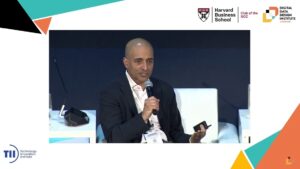Prevention vs Treatment to reduce the cost in healthcare
I work for a CHC which treats a large population who possess limited health literacy skills. A diverse population – different cultures, beliefs , values and life experiences. English is a second language amongst most of them, the poor and elderly who do not have access to the internet , face challenges related to understanding and processing information delivered to them either by complicated healthcare terms used by the providers , brochures and online portals .
What effective strategies can be used to address this issue , and bring about awareness in basic healthcare needs amongst this population – such as nutrition, health education, prevention of childhood obesity, oral hygiene with preventive dental care and mental wellness (few of the areas I have addressed) .




What we try to do in a similar population is not emphasize the use of the website and brochures but encourage patients to bring their partner, friends, children,… to the consultation.
Our nephrology department just won an award with their ‘klare taal’ (clear language) project. They organize medical language courses for patients and hospital staff to improve the language used by providers.
What we try to do in a similar population is not emphasize the use of the website and brochures but encourage patients to bring their partner, friends, children,… to the consultation.
Our nephrology department just won an award with their ‘klare taal’ (clear language) project. They organize medical language courses for patients and language and cultural awareness courses for hospital staff to improve the language used by providers.
Our country ( India) has a challenge of multiple languages , cultures and health risks changing for every 100 kms. So, it becomes imperative for us that we communicate to the low literacy group / illiterates in their vernacular language. Audio visual communication tools have proven to be more effective than pamphlets or brochures. Engaging their local healthcare providers or training some local volunteers to engage in healthcare education ( other than doctors ) for the job will help them connect to their educators more effectively than expecting them to struggle through the Doctor – Patient chasm which might lower the possibility of expressing their challenges and continuously seeking education and solutions.
I love that you are asking this question! Evidence has shown that better results on Social Determinants of Health screenings are associated with better health outcomes. Delving into and identifying social, environmental and and behavioral health domains and gaps – and offering resources and teaching, can dramatically impact health and disease.
One approach would be a multidisciplinary outreach team. Specifically, local cultural or spiritual leaders in the community paired with nursing, case management and educators (volunteers?). Having the ability to make referrals (dental, nutrition, social) for the identified gaps in real time would be necessary. I would suggest setting up basic health screenings and consistent drop in “clinics” (outside of the traditional office set up), in the community centers or gathering places. Bringing the resources to the patient may help overcome access and cultural barriers.
Currently, our care managers work to identify the patients that have been using the ED or hospital frequently and pair them with a PCP office when possible. They then stay in contact with them providing education, coordinating care and services. The care management department has a clinical pharmacist and social workers and nurses to support the patients. They provide this care in several languages and attempt to engage them in way that work best for them, via phone, using Skype, meeting them at the doctor’s office.